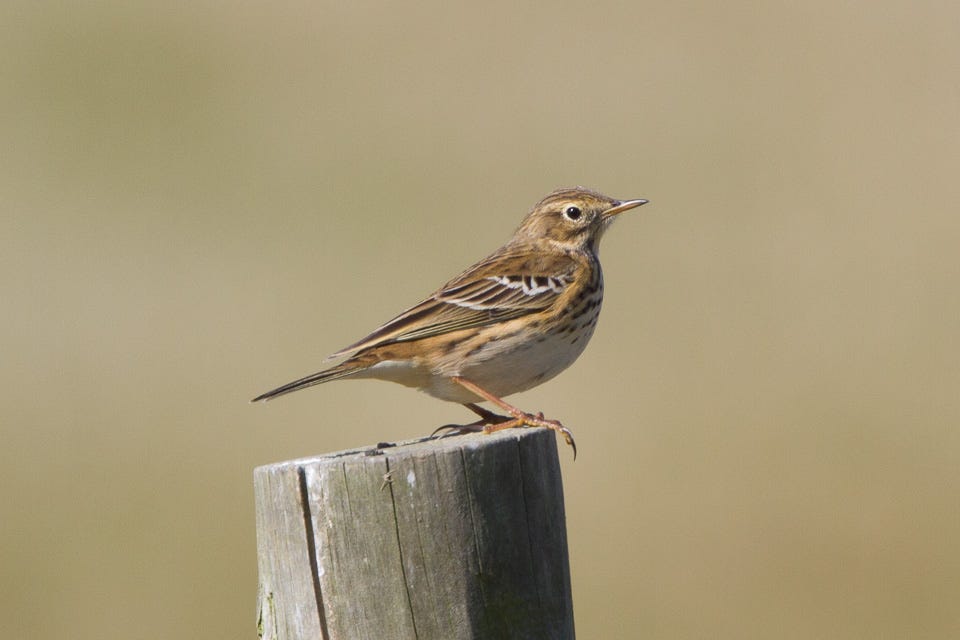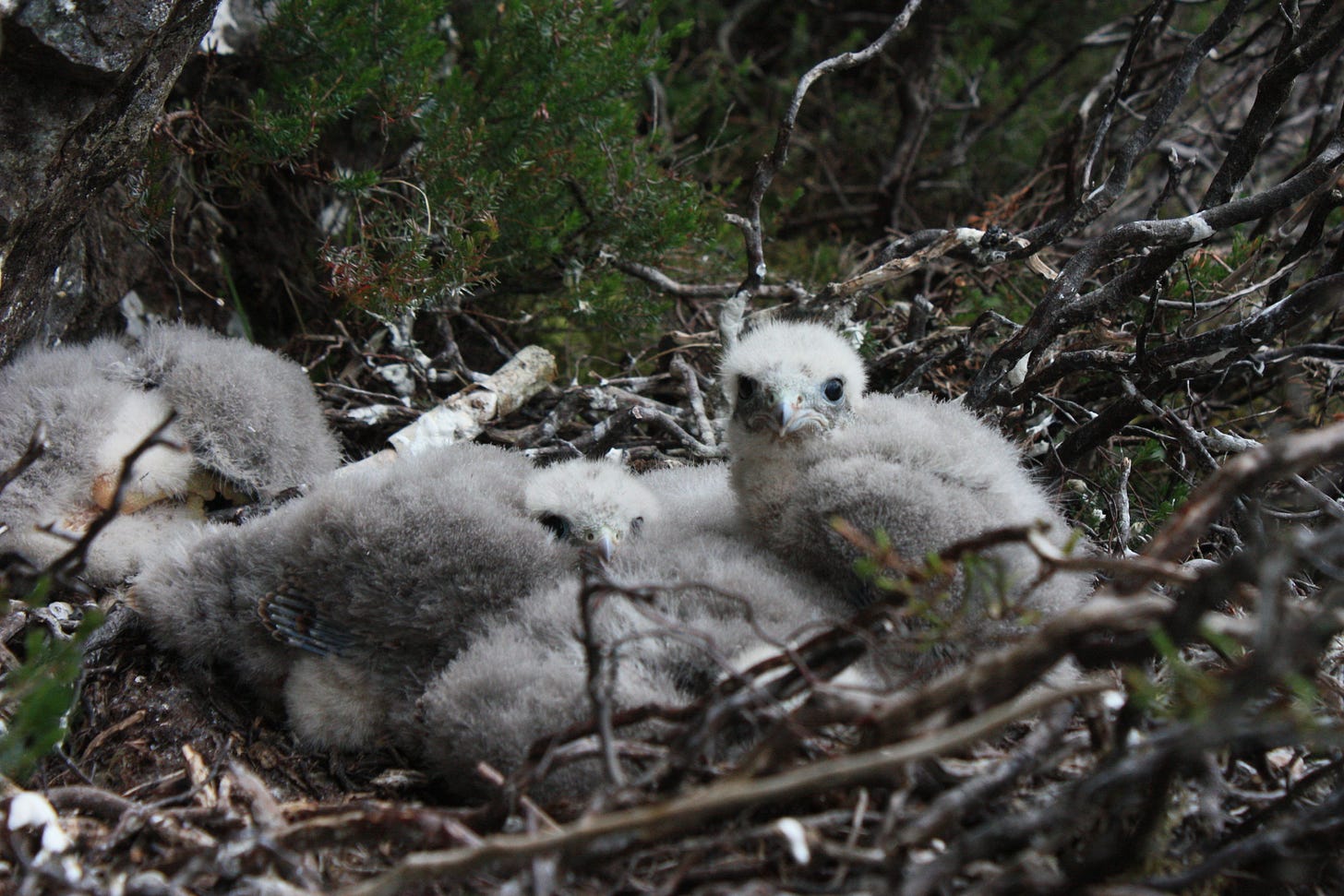I'd like to share my experience from a guided walk I led recently, where the participants and I ended up receiving a bit more than we had anticipated.
The walk started as normal. It was nice group of people, the weather was fair, and everyone was chatting amicably. A lizard basked on the sun soaked Torridonian sandstone boulder. A Wheatear, recently arrived from Africa, was casually exploring vacant rabbit burrows for a place to nest. I was expounding on the virtues of machair and the wonderful flowers whilst a Meadow Pipit nonchalantly watched a beautiful bumblebee bounce from dandelion flower head to dandelion flower head. All was well with the world.
Suddenly the sky was torn apart in an explosion of movement and sound. We all stopped moving.
For the Meadow Pipit the next few minutes would mean life or death. On arrow shaped wings a male Merlin zig-zagged, twisted and turned in pursuit of the Pipit; over our heads, around the sandstone erratic, skimming the top of the machair and around the drystone dyke. It was a magnificent flying show right in front of us.
Merlins are fast – very fast. They are our smallest bird of prey. The male is barely larger than a thrush. But they are fierce and agile using surprise attacks on unsuspecting small birds. They don’t stoop on birds the way Peregrine Falcons do; instead, they attack at high speed, horizontally or even from below, chasing the prey upwards until they tire.


Merlins (Falco columbarius) eat mostly birds, typically catching them in mid-air during high-speed attacks - such as the one we were witnessing. In the Highlands they seem to specialise on Meadow Pipits.
If you are ever lucky enough to see this small, dashing falcon sit still, you will notice the male is a blue grey in colour and the female grey brown. It is one of our rarer breeding birds of prey and the population seem to be stable at least in the Highlands of Scotland.

Scottish Merlins nest most often on the ground frequently on a slope in deep heather or on the ledge of a small crag. Normally only a bare scrape is made, and the most common clutch size is four or five eggs.
In some areas they do however use old tree nests, particularly those made by hooded crows. These nests are often in small shelterbelts or isolated trees. I have even been able to encourage them to nest nearby by putting out a hanging basket filled with sticks and moss and places in a solitary rowan tree.
After what seemed like ages, but was probably only seconds, both predator and prey disappeared over the rise and out of sight. We never got to see the outcome of this dual, but we know it will not be the first. The merlin has a nest nearby and soon will have a hungry brood to feed. And Meadow pipits are definably on the menu.
Note that Merlins and their nests are strictly protected under Schedule 1 of the Wildlife and Countryside Act 1981 and The Nature Conservation (Scotland) Act 2004 and you need a license to go anywhere near the nest.
The High Life Highland Countryside Ranger Service runs regular guided walks so please come and join us. You never know what you might see!
Andy Summers, North Highland's Senior Ranger for High Life Highland, is a dedicated naturalist with a deep understanding of the region's diverse ecosystems. His extensive experience in wildlife conservation and passion for preserving North Highland's pristine landscapes make him a vital asset. Andy's work encompasses wildlife observation, environmental education, and passing on a greater appreciation for the area's unique flora and fauna. His commitment to conserving North Highland's natural heritage is evident in his expertise and unwavering dedication.







